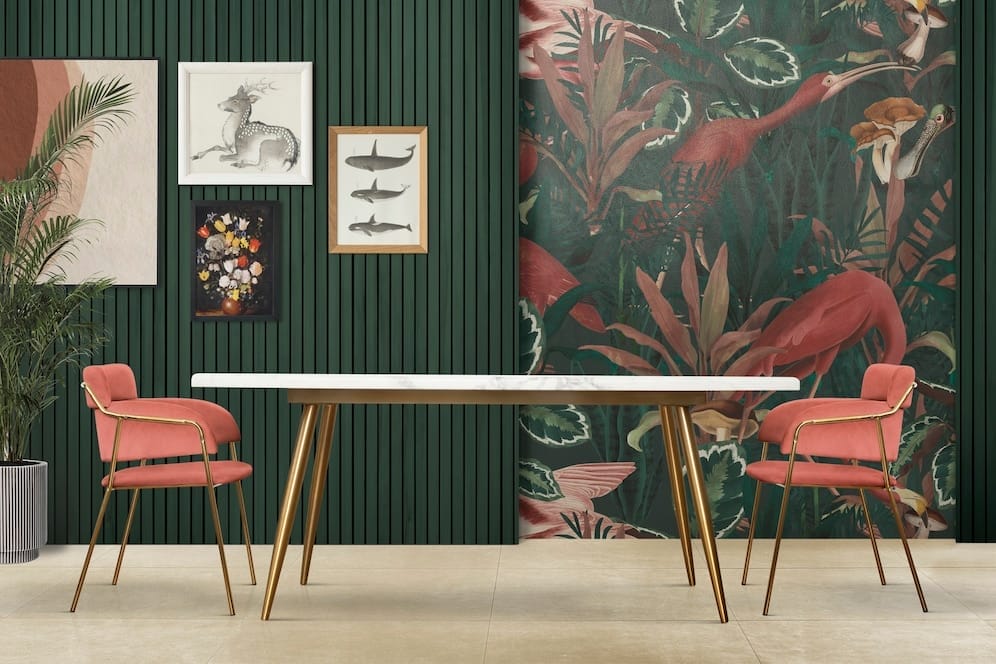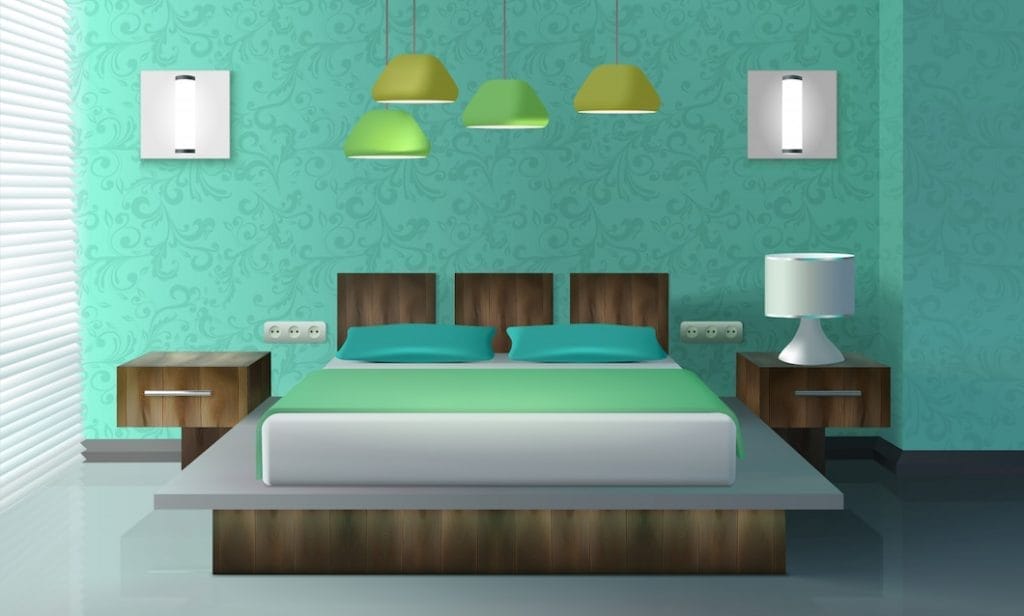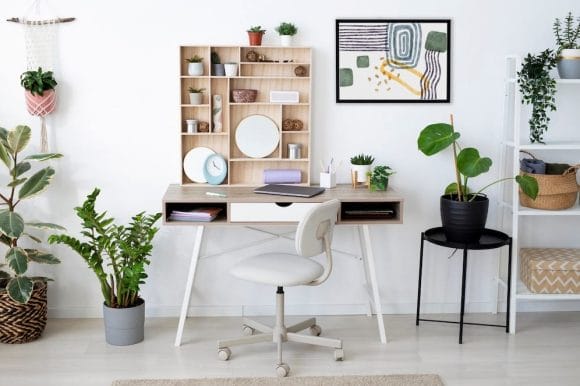Elevate Your Space with Vibrant Color Blocking Wall Painting Ideas
Color blocking is a popular design technique that involves using bold and contrasting colors to create visually striking and dynamic spaces. One of the most effective ways to incorporate color blocking into your home is through wall painting. In this blog post, we’ll explore creative and inspiring color-blocking wall painting ideas to help you transform your living space into a vibrant and stylish haven.

Understanding Color Blocking
Color blocking is a dynamic and creative design technique that involves pairing two or more contrasting colors to create a visually striking and impactful look. Initially popularized in the fashion industry, color blocking has transcended its origins and become a prominent feature in various design disciplines, including interior design. This concept revolves around the strategic use of colors to enhance visual appeal, introduce modern aesthetics, and add a touch of vibrancy to different spaces.
In interior design, color blocking can be employed to transform walls into captivating canvases. By thoughtfully combining colors, you can achieve a sense of depth, interest, and contemporary flair in your living spaces. Whether you’re aiming for a bold and energetic atmosphere or a calm and serene ambiance, color blocking provides a versatile and customizable approach to home decor.
The Core Principles of Color Blocking
Contrast is Key: At the heart of color blocking lies the concept of contrast. The chosen colors should be distinct from one another, and create a visually striking effect, when placed side by side. This contrast can be achieved through variations in hue, saturation, or brightness.
Strategic Pairing: Successful color blocking involves careful consideration of which colors to pair. Understanding the color wheel and the relationships between different hues is crucial. Complementary colors, those opposite each other on the color wheel, often work well together for a high-impact look.
Balancing Act: While bold and contrasting colors take center stage in color blocking, achieving balance is essential. Integrating neutral tones can help anchor the overall design, preventing it from becoming overwhelming. Neutral colors like grays, whites, or muted tones serve as a backdrop, allowing the vibrant hues to stand out.

Applications of Color Blocking in Interior Design
Walls as Canvases: Instead of opting for traditional single-color walls, consider turning them into artistic canvases. Experiment with geometric shapes, patterns, and contrasting color combinations to transform plain walls into focal points.
Creating Illusions: Explore the visual impact of color blocking on the perception of space. Horizontal color blocking can make a room feel wider, while vertical color blocking can give the illusion of height. So, this technique can be particularly effective in rooms with specific spatial considerations.
Ombre and Gradient Effects: Elevate your color blocking by incorporating ombre and gradient effects. Here, the technique involves seamlessly transitioning from one color to another, creating a visually stunning and harmonious flow. It’s a sophisticated way to introduce color variation without abrupt contrasts.
Accent Walls and Half-Painted Walls: If a full-color transformation seems daunting, start with accent walls or half-painted walls. Select a specific area, such as the wall behind the bed or the entrance, and paint it in a contrasting color. This approach adds drama and personality without committing to a complete overhaul.
Bringing Color Blocking to Life: Tips and Considerations
Experiment with Samples: Before committing to a full-scale color-blocking project, experiment with small samples. Paint a small wall section to see how the colors interact and whether they achieve the desired effect in your space.
Use Painter’s Tape: Achieving clean and precise lines is crucial in color blocking. Utilize painter’s tape to separate different sections and ensure a polished finish. Take the time to measure and plan the placement of colors accurately.
Prepare the Surface: Properly preparing the walls is essential for a successful color-blocking project. Fill any holes or imperfections, sand the surface if needed, and apply a primer. A well-prepared surface ensures better adhesion and longevity of the paint.
Personalize with Artwork: Enhance your color-blocking design by incorporating artwork or murals. Use the painted walls as a canvas to showcase your artistic expression through hand-painted designs, decals, or a curated collection of artwork that complements the color scheme.
Choosing the Right Color Palette
Selecting the perfect color palette is a crucial first step in any color blocking wall painting project. The colors you choose will set the tone for the entire space, influencing the mood, atmosphere, and overall aesthetic. Hence, in this section, we’ll explore the key considerations for choosing the right color palette and how different hues can evoke specific feelings within your home.
1. Consider the Purpose of Each Room:
Begin by considering the purpose and function of each room. Different colors can elicit varying emotions and energies.
Living Room: Consider warm and inviting colors like shades of red, orange, or muted yellows for your living room to create a cozy and social atmosphere.
Bedroom: Opt for calming and soothing colors such as blues, greens, or soft purples to promote relaxation and restful sleep in the bedroom.
Home Office: Choose energizing colors like bright blues, greens, or even subtle yellows to foster productivity and focus.

2. Warm vs. Cool Colors:
Understanding the distinction between warm and cool colors is fundamental in creating the desired ambiance.
Warm Colors (Reds, Oranges, Yellows): These colors evoke energy, vibrancy, and warmth. They are ideal for spaces where you want to create a lively and dynamic atmosphere.
Cool Colors (Blues, Greens, Purples): Cool tones bring a sense of calm, serenity, and sophistication. They work well in areas designed for relaxation and concentration.
3. Neutral Colors for Balance:
While bold colors are essential for color blocking, incorporating neutral tones is crucial for achieving balance and preventing the space from feeling overwhelming. Also, colors like gray, white, or beige can serve as a backdrop, allowing the vibrant hues to stand out without competing for attention.
4. Harmonious Color Schemes:
Explore different color schemes to achieve a harmonious and cohesive look.
Analogous Colors: Choose colors that are adjacent to each other on the color wheel, creating a subtle and serene palette.
Complementary Colors: Opt for colors that are opposite each other on the color wheel for a high-contrast and visually striking effect.
Monochromatic Colors: Stick to variations of a single color for a sophisticated and unified appearance.
5. Natural Light and Room Size:
Consider the amount of natural light in each room and the size of the space. Darker colors can make a room feel smaller, while lighter colors can open up a space and reflect more natural light. If you have limited natural light, choose lighter shades to brighten the room.
6. Personal Preferences and Style:
Ultimately, your color palette should reflect your personal preferences and style. Consider the colors that resonate with you and bring you joy. Whether you prefer bold and vibrant or subtle and muted tones, your color choices should align with your individual taste.
7. Sample Testing Before Commitment:
Before committing to a full-scale color blocking project, it’s advisable to test your chosen colors in small sections of the wall. Paint sample areas to observe how the colors interact with each other and how they appear in different lighting conditions. This allows you to make adjustments and ensure the desired effect.
8. Adapting Trends to Your Space:
While staying informed about color trends can be inspiring, it’s essential to adapt them to suit your space and preferences. Trends come and go, but choosing colors that resonate with you ensures a timeless and personalized result.
Conclusion
Color-blocking wall painting offers endless possibilities for transforming your living space into a vibrant and stylish haven. Whether you prefer bold geometric patterns, ombre effects, or a combination of complementary colors, the key is to experiment and have fun. Use this blog post as a starting point to inspire your creativity and bring a fresh and modern look to your home through the power of color blocking. Ready to embark on this exciting journey? Explore more at FreshHomez and turn your vision into reality!
